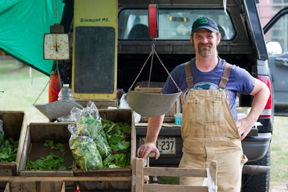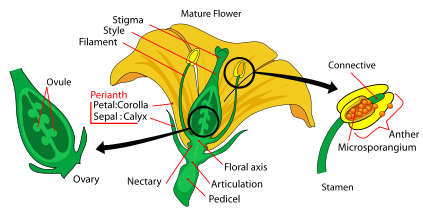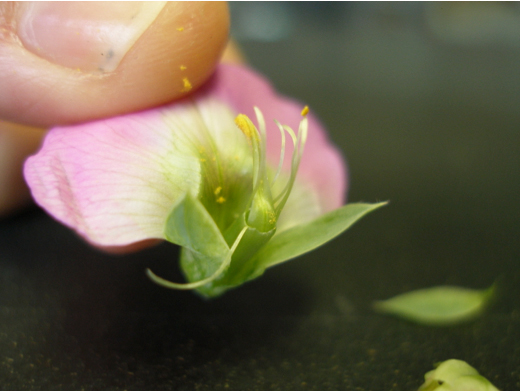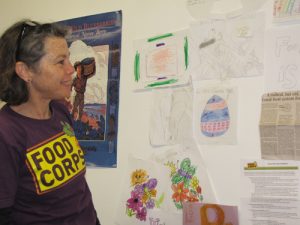Maine Home Garden News — July 2013
- July is the month to . . .
- Don’t Try This at Home: Six Common Ways that People Unknowingly Damage or Kill Trees
- Birds and Bees Basics for Home Gardeners
- Don’t Yuck My Yum … Food Corps Success in Maine
By Richard Brzozowski, Extension Educator, University of Maine Cooperative Extension, richard.brzozowski@maine.edu
- Got slugs? With such a wet June, you now might be experiencing slug problems in your yard and garden. Learn more about slugs and snails and their control from Maine.gov’s Got Pests? website.
- Keep weeds under control.
- In perennial beds consider techniques such as hand pulling, mulching, and clipping.
- In vegetable gardens consider techniques such as hand pulling, hoeing, mechanical cultivation, mulching, and clipping.
- In some instances, herbicides may be an option for effective weed control. There are synthetic and organic herbicides for use in gardens and yards. Read and follow the label directions. Consider the pros and cons in herbicide use for your situation.
- It’s not too late to plant items for a fall vegetable garden. For more information, see Bulletin #2190, Vegetable Varieties for Maine Gardens.
 Visit your local farmers market. Local farm products and crops are becoming more available as the season progresses. Visit Get Real, Get Maine for information about farmers markets near you.
Visit your local farmers market. Local farm products and crops are becoming more available as the season progresses. Visit Get Real, Get Maine for information about farmers markets near you.- Visit the gardens of others this month as a way to gain knowledge in new plant materials and growing techniques. Look for organized garden tours offered by garden clubs and civic organizations in your region. A partial list of garden tours in Maine is available at the Maine Garden Journal’s website.
- Visit a local farm to Pick-Your-Own strawberries. You can find farms by county or by product at Get Real, Get Maine!
- Make regular observations of your garden, looking for good plant health and the threats to plants such as possible pests, plant damage, leaf color, and lack of fruitfulness.
- If wildlife is a problem in your garden, contact the state office of the USDA Wildlife Services in Augusta for control options and advice. There is a new contact for Wildlife Services in Maine. She is Robin Dyer, State Director/Certified Wildlife Biologist ®, USDA, APHIS, Wildlife Services, 79 Leighton Road, Suite 12, Augusta, ME 04330, 207.629.5181. Robin.A.Dyer@aphis.usda.gov. eXtension.org (a national informational system for Cooperative Extension) has a entire section that addresses information on wildlife damage management. For more information and to seek management strategies for species specific, see eXtension’s Wildlife Damage Management.
- Have you got your resupply of firewood yet? The state of Maine has an informative site that might prove useful to you. For more information, see Maine.gov’s Heating With Firewood.
- Locate a soup kitchen or food pantry in your community for possible donations from your garden or for volunteer work. Maine Harvest for Hunger, an outreach of UMaine Extension, can help you find sites near you.
Don’t Try This at Home: Six Common Ways that People Unknowingly Damage or Kill Trees
By Richard Brzozowski, Extension Educator, University of Maine Cooperative Extension, richard.brzozowski@maine.edu
Don’t drive or park on the lawn near a tree(s). Tree roots like all other plant parts need air. When cars, trucks or other vehicles compact the soil beneath the base of a tree, soil pore space is reduced. The natural pore space of soil allows for water and air to be a part of the soil. Use alternate places to park your vehicles. Minimize vehicular traffic on lawns.
Don’t use excessive mulch. Mulch is often touted as the answer to all the gardener’s problems. It will control weeds, keep the soil temperature warm or cool, hold moisture, etc. However, mulch should be used wisely and in moderation. Never cover the natural flare of the tree trunk with mulch piled high against the trunk. Mulch will hold moisture against the tree trunk and be a harbor for boring insect pests. Feather the mulch in a light layer near the tree base.
Don’t weed whack at the tree base or scrape the tree trunk with your lawnmower. Many folks like a neat lawn with sharp edges and no unsightly weeds near tree bases. But often times little is considered when tackling those weeds. When using a line-trimmer or lawn mower, don’t allow the machine or its parts to damage the tree’s bark. The lifeline of the tree is cut when the layer just beneath the bark is damaged or cut. Take the time to weed with a hand clipper near the base of trees.
Don’t add an excessive amount of topsoil or fill around the base of trees. More than 90% of the roots of trees exist in the top foot of soil. These roots need air and water to live, grow and thrive. By adding more fill or soil, the ability of the tree to use air and water near the surface is restricted. Tree trunks have a natural flare at ground level. Make sure that this flare is evident on the trees in your yard.
Don’t keep tree trunks wrapped. The wrap on tree trunk is used to protect trees at the nursery or in transit. These wraps should be removed to allow the trunk to be exposed to air and light. Insects and disease organisms thrive in a place that is warm, moist, and protected from natural enemies. The wrap provides this “safe harbor.” Remove it immediately after planting a tree. Mouse guards such as hardware cloth or plastic spiral wraps can be used from late fall until early spring to protect tree trunks by preventing mouse damage under the snow line. A hardware cloth formed in a wide cylinder can be kept on the tree year round if enough space is proved between the tree and the guard. Don’t allow the hardware cloth to touch the tree and constrict the tree’s growth. Change or widen the hardware cloth cylinder as the tree ages.
Don’t keep guide wires on newly planted trees. People usually forget to remove the guide wires from a newly planted tree. Over time the wire and the tree grow together and cause severe damage or death to the plant. If planted properly, guide wires are not usually needed to help a tree stand upright.
Trees are important to our landscape and our environment. Learn all you can about properly caring for the trees in your yard, neighborhood, and community. To learn more about the adaptability of native trees and shrubs to the stresses of urban and residential landscapes in Maine, see Native Trees and Shrubs for Maine Landscapes.
Birds and Bees Basics for Home Gardeners
By Kate Garland, Extension Educator, University of Maine Cooperative Extension, katherine.garland@mane.edu
A number of gardening questions are related to floral biology. Understanding the requirements necessary for plants to produce fruit and seed can greatly help gardeners improve fruit production and successfully save seed.
Flower anatomy basics

Flowers come in many shapes and sizes. Regardless of their form, typically their primary purpose is for sexual reproduction. Figure 1 shows the main anatomical features of a perfect flower (meaning it has both male and female reproductive parts). For fruit and seed production, we’re most interested in the reproductive parts. The female parts (stigma, style, ovary, and ovule) are collectively called the pistil. Male parts (anther, filament, and pollen) are collectively referred to as the stamen. Some flowers have both pistil and stamen (Figure 2), while some flowers have only one or the other. Squash is an example of a plant that has both sex flowers housed on the same plant (moniecious). Some species are dioecous, such as winterberry, where entire plants only bear either male or female flowers (not both). To have fruit on such species, you must have a male and female plant present. The fruit will only develop on the female plant. A male winterberry plant can provide enough pollen for multiple female plants and does not need to be directly beside the female plant for pollination to occur. Pollinator insects can travel quite a distance to transfer pollen from one plant to another. However, the closer the plants are to one another, the more likely pollination will occur.
Pollination vs. Fertilization

Pollination is simply the transfer of pollen to the female part of a flower. The term fertilization refers to when the pollen grain successfully germinates down the style into the ovary to transfer genetic material into the ovule. It’s important to recognize the difference between the two terms. Pollination does not always lead to fertilization. For example, some species, such as apples and blueberries, have flowers that are adapted to not readily accept their own pollen even though their flowers have both male and female parts. The key with such species is to select different varieties that bloom at the same time. Oftentimes, gardeners can still have fruit if they only plant one apple or blueberry plant because other varieties exist in neighboring landscapes. For more info on pollination requirements of different types of fruit trees, visit our Growing Fruit Trees in Maine website.
Commonly asked questions related to floral biology:
My cucumber flowers are dropping off before they develop fruit. Why is this happening?
Plants within the cucurbit family (ex: squash, pumpkin, cucumber, melon, zucchini) have separate male and female flowers on the same plant (moneicious). Without both male and female flowers present, the female flowers will not get pollinated and therefore will not develop fruit. On young plants usually male flowers appear first and female flowers will develop shortly after.
I plant a single row of corn in my garden every year and the kernels never develop. What is happening?
Corn has particularly interesting flowers. It’s a moniecious plant with male flowers located at the top (tassle) and the female flowers are located in the husk. For the female flowers, the tip of the silk is the stigma, the length of the silk is the style, and each flower has a single ovule (the kernel). Each ovary requires its own pollen grain in order to be fertilized. Pollen is transferred to the stigma via gravity and/or wind. If corn is planted in a row and wind blows across the row, the pollen will not reach the female flowers to fertilize them. This is why corn should be planted in blocks.
Will I get weird hybrid pumpkins/squash fruits if I plant them beside each other in my garden?
No. The main concern with planting these two different crops close to each other would be if you were interested in saving their seed to plant for next season. The problem is that some members within the cucurbit family are able to be fertilized by one another’s pollen, but the characteristics of the fruit the first year will not be altered by this cross. For example, when pollen from a male pumpkin flower fertilizes a squash flower, the fruit itself will still look like a squash. However, the resulting hybrid seed will have genes from both “parent” plants. When that “daughter” seed is planted, the plant will have traits from both the squash and pumpkin. Another way to look at this question is to think of a female basset hound mating with a male yellow lab. The basset hound will not change color or get taller after mating with the lab, but the resulting progeny will have characteristics of both parents.
With that said, you can still save seed from your cucurbit crops even if you have different types beside each other. The trick is to pollinate the female flowers yourself (using male flowers from the same plant) before insect pollinators get a chance to access the flower. Then, enclose the pollinated flower to prevent unwanted pollen from reaching the stigma. For more information, check out our seed saving bulletin.
Homework
The next time you are out in the garden, take a close look at some of your flowers with a magnifying glass or hand lens. Sacrifice a tomato flower to see if you can identify the reproductive parts. You’ll never look at your garden the same way again.
Don’t Yuck My Yum … Food Corps Success in Maine
By Brenda Seekins, Master Gardener Volunteer, Somerset County, Maine

Contrary to popular myth, children love vegetables … especially when they have an opportunity to grow their own.
That is one of the common truths that emerged from Laurie Magee’s first, and only year, with the Foods Corps, a program sponsored in Maine by the University’s Cooperative Extension, and nationally through the Food Project, John Hopkins Center for American Indian Health and the Oregon Department of Agriculture. The program this year ran in 10 states with plans for expansion in future years.
For the past year, Magee visited schools throughout Somerset County, Maine, introducing children to healthy food, where it comes from, and how to make the most of it.
Children have an adventurous nature, she learned, and are almost always eager to try new things … yes, even vegetables, and perhaps most especially vegetables they get to plant and grow themselves.
In the program’s first year in Maine, Magee was chosen, from among the 1,000 candidates that apply annually across the nation, to be the Service member serving Somerset County, out of 10 serving the entire state. A 30-year-plus resident of Anson, Magee joined more than 80 “volunteers” from across the country who introduce children to healthy foods. A Master Gardener herself, Magee has been reaping the benefits of a garden since her childhood in New York City where her mother raised a garden in Greenwich Village.
The Food Corps program is based on three “pillars”: knowledge, engagement, and access.
Through knowledge, she is charged with teaching children about real food, how to eat healthy, and where food comes from. Through access, the service corps member tries to insure access to healthy foods, through the school garden or working with school food directors using healthy foods in the school lunch programs. Incorporating the use of local foods and farmers into the local food service plan is another key element in the program.
It’s a celebration of what’s healthy, what’s available, and what can be produced, Magee said. Her programs through the schools have found her working with all ages in school gardens, gardening clubs, incorporating good food habits into lunches and snacks, working with teachers and kitchen staff and local growers. The programs have produced gardens, plays, specialty lunches, and working towards a unique harvest lunch annually that will incorporate Maine-grown products.
Being it’s the first year of the program, Magee has spent a great deal of time opening doors and making contacts to insure subsequent years, and another service member, can also be successful. Her efforts enabled her to work with nine schools regularly while visiting or helping others with specialty projects. These included working with the agriculturally-based Maine Academy of Natural Sciences, a school garden at the Cornville Elementary School, creating a garden with first and third graders at the Garrett-Schenck School in Anson; with kindergarten and first grade in Solon; the Garden Club at Bloomfield Elementary where the children presented a play and a meal for parents; and a special needs class at the Carrabec Community School. Other programs included container gardens at Carrabec High School; an introduction to gardening at Forest Hills in Jackman where the school recently earned a grant to grow its on produce; and with the Cooking Matters program at Hartland Elementary, working with an AmeriCorps volunteer.
The program is intended to encourage new leaders in food training, start or restart school garden programs … “to set roots” for the Food Corps to continue in Somerset County.
“It’s a beginning,” Magee said, “We’re beginning to build a partnership in the communities. The children are very enthusiastic. They love to plant and 98% of them love to try something new. They learned to say, and believe, ‘Don’t Yuck my Yum’ as a common answer to any non-believers in the vegetable-eaters among them. It became pretty apparent that you need to start nutrition education when they are young.”
“It was an awesome opportunity for me. I feel fortunate to be selected and I’ll miss it, but it’s time to find something new for myself.”
Food Corps Service Members are selected to serve one year in their position supported with a stipend and benefits. The program is supported through Kelloggs, Annies, and New Balance, as well as other local and national grant funding.
University of Maine Cooperative Extension’s Maine Home Garden News is designed to equip home gardeners with practical, timely information.
Let us know if you would like to be notified when new issues are posted. To receive e-mail notifications fill out our online form.
Contact Lois Elwell at lois.elwell@maine.edu or 1.800.287.1471 (in Maine).
Visit our Archives to see past issues.
Maine Home Garden News was created in response to a continued increase in requests for information on gardening and includes timely and seasonal tips, as well as research-based articles on all aspects of gardening. Articles are written by UMaine Extension specialists, educators, and horticulture professionals, as well as Master Gardener Volunteers from around Maine, with Professor Richard Brzozowski serving as editor.
Information in this publication is provided purely for educational purposes. No responsibility is assumed for any problems associated with the use of products or services mentioned. No endorsement of products or companies is intended, nor is criticism of unnamed products or companies implied.
© 2013
Published and distributed in furtherance of Cooperative Extension work, Acts of Congress of May 8 and June 30, 1914, by the University of Maine and the U.S. Department of Agriculture cooperating. Cooperative Extension and other agencies of the USDA provide equal opportunities in programs and employment.
Call 800.287.0274 or TDD 800.287.8957 (in Maine), or 207.581.3188, for information on publications and program offerings from University of Maine Cooperative Extension, or visit extension.umaine.edu.
